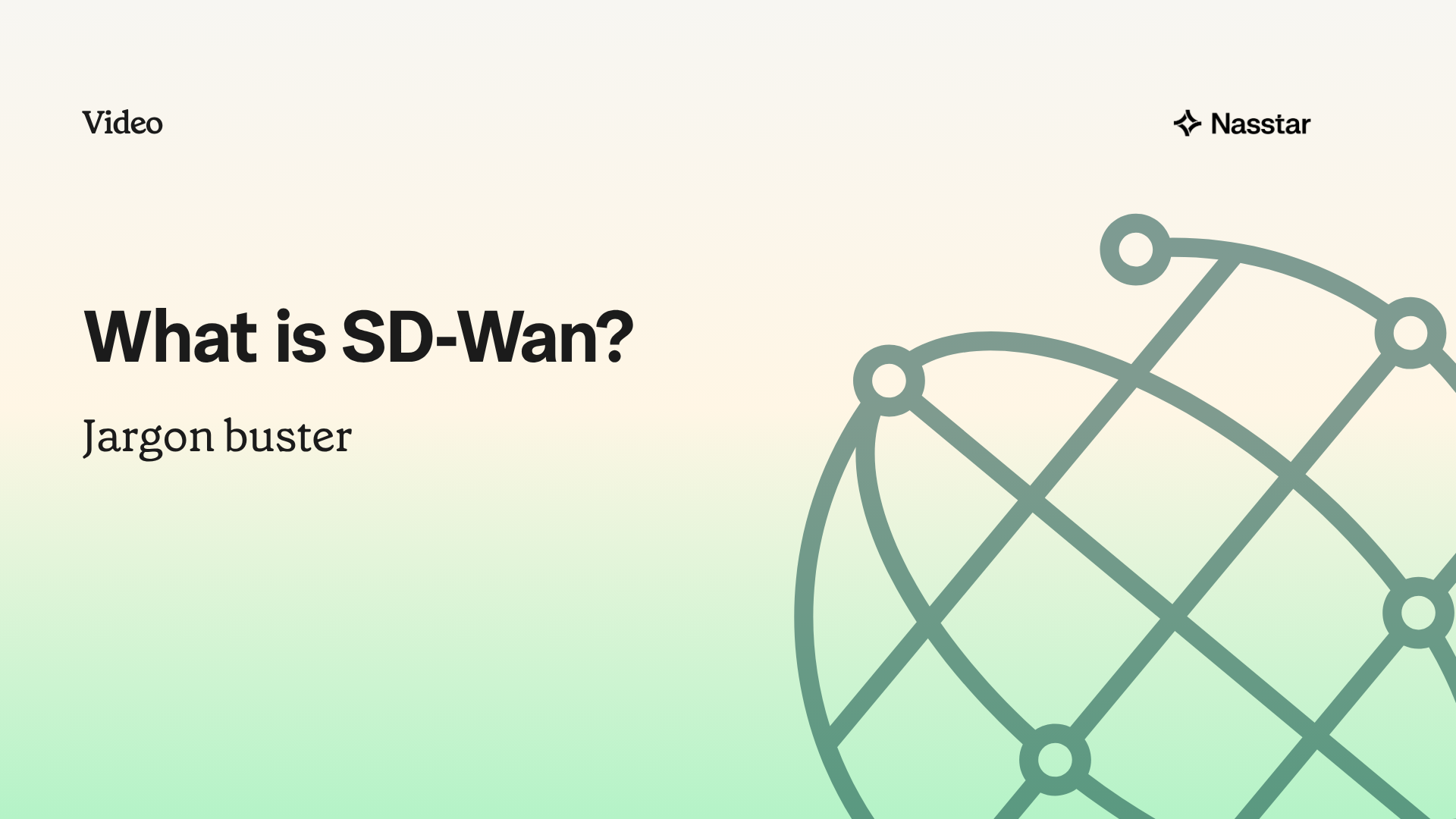SD-WAN is a cloud-first alternative to the traditional WAN we all know. But how does it work and could your business benefit?
Find out in the latest jargon buster video below.
Transcription
What is SD-WAN and how does it work?
SD-WAN stands for Software-defined wide area network.
A traditional wide-area network (WAN) is a connection between local area networks (LANs) that are physically separated.
Example: Users from regional office branches (LAN) could all be connected to applications hosted on servers at a central data centre at the head office (WAN).
The Internet is considered the world’s largest WAN.
A traditional WAN, such as an MPLS or a Leased Line, can be inflexible, inefficient and create poor end-user experience in a cloud-first world.
SD-WAN is a cloud-first WAN. It allows enterprises to actively and securely connect users to their applications in the cloud from wherever they’re based.
In 2020, nearly 60% of businesses moved their workloads to the cloud.* (*Flexera)
The architecture of a traditional WAN was not built with modern ways of working in mind, so is not cloud-friendly.
Moving to an SD-WAN model solves that problem.
Benefits of an SD-WAN include:
Improved performance using dynamically routed application traffic
Enhanced agility, meeting the needs of the ever-evolving digital world
Intelligent insights delivering in-depth reporting across your entire network
Reduced complexity with central, automated cloud-based management
Fast deployment ready to be installed on third-party WAN connections
Future-proofed technology, ensuring your business is ready for whatever’s next





